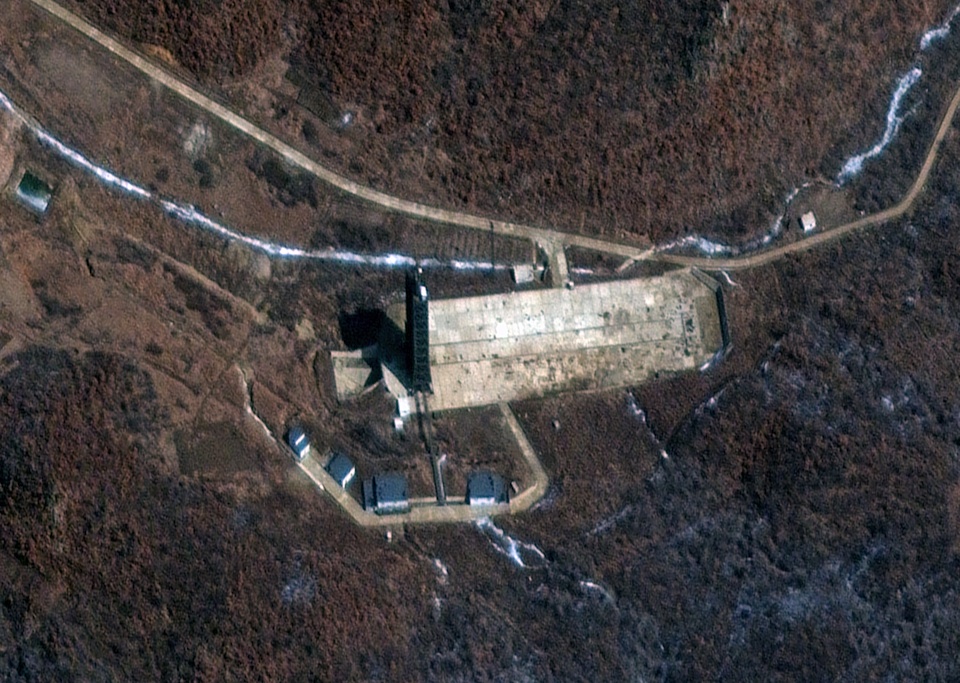Japan’s Minister of Defense, Naoki Tanaka, issued orders on 30 March authorizing the Japanese Self-Defense Force (SDF) to shoot down a North Korean rocket, scheduled for launch in mid-April, should the rocket or rocket debris appear to pose a danger to Japanese life or property.

The shoot-down order was announced on the same day that South Korean sources reported that the North had test fired two short-range missiles from a site on the North’s west coast.
North Korea is reportedly fueling the three-stage Uhna-3 rocket for launch sometime between 12 and 16 April in honor of the nation’s founder’s 100th birthday.
Japanese defense sources consider the likelihood of the rocket or debris from the launch actually threatening Japan to be relatively low, but the Defense Ministry has repeatedly stated that Japan will be prepared to protect property and lives.
Japan has prepared plans to deploy three Aegis-capable destroyers to strategic sea lanes to intercept the rocket and has also issued directives authorizing deployment of Patriot PAC-3 missile batteries to areas best suited to improve the odds of actually bringing down the rocket should that become necessary.
The shoot-down order was issued following a meeting of Japan’s Security Council convened by Prime Minister Yoshiko Noda. With this order now in hand, the Japanese Self-Defense Force can execute the deployment plans developed earlier in March. Japanese leaders issued a similar order when North Korea launched a long-range ballistic missile in 2009, but Japanese forces did not fire on that missile when it became obvious it was not a threat to Japan.
Current plans call for one Japanese destroyer to be deployed to the Sea of Japan and the other two warships will take up station in the East China Sea. All three destroyers are equipped with Aegis Standard Missile-3 (SM-3) interceptors.
Japan’s Ground Self-Defense Force (GSDF) is also under orders to deploy Patriot PAC-3 missile batteries in close proximity to the Defense Ministry’s headquarters in Tokyo, on the main island of Okinawa, and on Okinawa’s southwestern islands of Miyako and Ishigaki.
Defense plans call for the Aegis SM-3 missiles to intercept and destroy any airborne threat outside the Earth’s atmosphere. If this fails, the PAC-3 missiles will be fired at a target as it reenters the Earth’s atmosphere.
North Korea previously notified the International Maritime Organization of its planned rocket launch. The North has announced that the rocket’s planned trajectory will release the rocket’s first stage west of South Korea and the second stage will be dropped east of Luzon Island in the Philippines after flying over Japan’s Sakishima Island chain in the extreme southwestern part of Okinawa Prefecture.
In addition, the GSDF will mobilize helicopters, disaster response teams, and rescue teams to deal with any casualties that might result from the rocket striking Japanese territory. Japan’s Coast Guard, firefighters, and national police members will also be mobilized in those areas considered to be in greatest danger.
While North Korea continues to ignore international calls for a cancellation of the scheduled launch, insisting that the operation is designed to place a weather observation satellite in orbit, Defense Minister Tanaka told members of the press that Japan will be cooperating closely with the United States and South Korea in their endeavor to protect life and property.
South Korea has also made public announcements of its intent to bring down the rocket should it appear to be a threat to South Korean citizens or property.

















